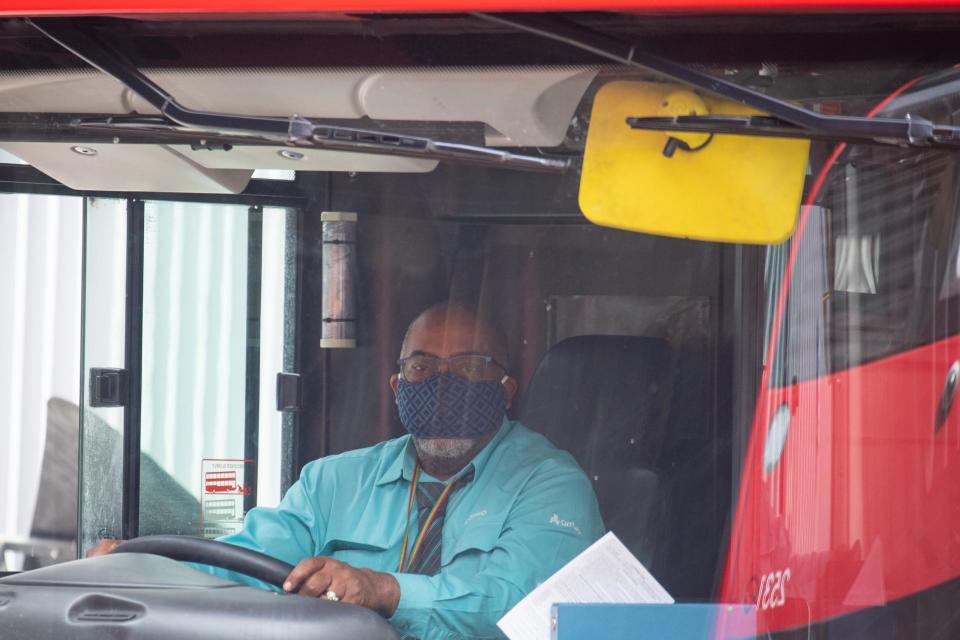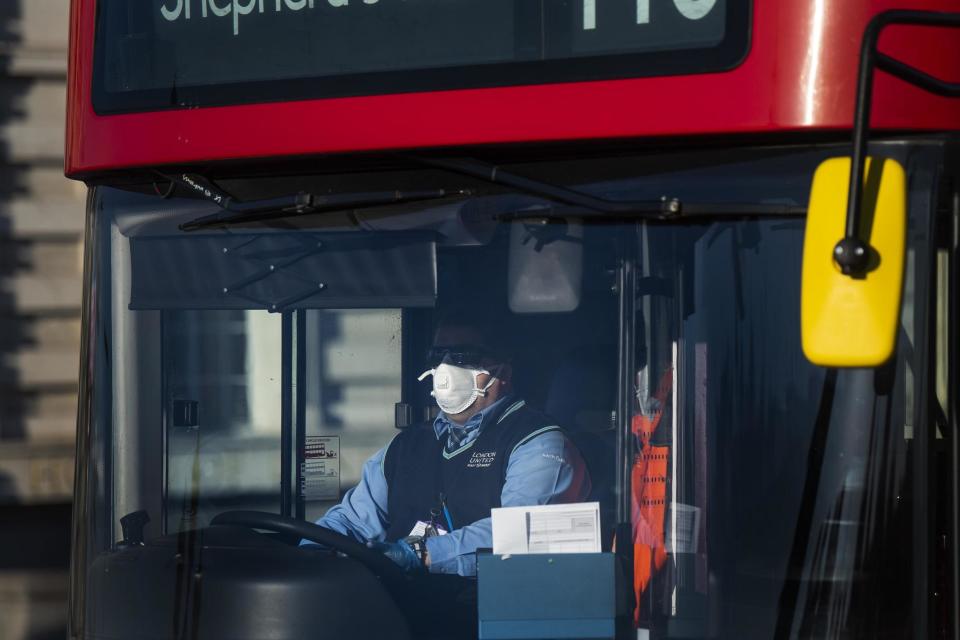Early lockdown could have saved lives of London bus drivers, study says

An earlier lockdown could have saved the lives of London bus drivers who died during the coronavirus pandemic, an independent review suggests.
Many of the drivers who died with Covid-19 had underlying health conditions and it is likely the frontline nature of their jobs added to their greater risk of death, the review by the UCL Institute of Health Equity found.
Figures show London bus drivers aged 20-64 had a mortality rate that was 3.5 times higher than men of the same age in all occupations in England and Wales from March to May.
Transport for London (TfL) commissioned the review after 29 of its bus drivers were reported to have died after contracting Covid-19.
Lilli Matson, TfL’s chief safety, health and environment officer, said the company has been "devastated by the tragic deaths of our colleagues" and it commissioned the study to try to find ways to cut the risk of others contracting coronavirus.
Professor Sir Michael Marmot, the director of the UCL Institute of Health Equity, said that "because London was an early centre of the pandemic, it is likely that the increased risk among London bus drivers is associated with exposure".
"Our review explicitly suggests that lockdown was the main factor that saved bus drivers’ lives," he said.
"If lockdown had occurred earlier, it would likely have saved more lives.
"For those with high blood pressure, exposure to Covid-19 is particularly hazardous, disproportionately affecting drivers of ethnic minority backgrounds.
"In addition to reducing exposure to the virus, all drivers should therefore be screened for health risk, with those most vulnerable to dying from the virus receiving the most benefit."
I know that Londoners are deeply concerned about the safety of bus staff during COVID-19. That’s why we commissioned an independent @UCL study to ensure we’re taking every possible measure to protect our heroic frontline staff. As the son of a bus driver, this is deeply personal.
— Mayor of London (gov.uk/coronavirus) (@MayorofLondon)
The study focused on the deaths of 27 of the drivers, as one had been on sick leave for other reasons before February 2020, and another death occurred in June 2020.
Among those who died, most stopped work in the 10 days either side of the March 23 lockdown, which suggests they became infected before it was imposed.
Death rates among drivers came down after the lockdown was imposed, which reinforces evidence that it was an effective measure in saving lives, the review found.
Of the 13 death certificates provided by relatives to the review, high blood pressure was identified as a contributory factor to the driver’s death in seven cases.
Cardiovascular disease, links between the sedentary nature of bus driving with heart disease and high blood pressure has been a known health risk in the profession since the 1950s and 1960s.

The review found that a high proportion of drivers who died lived in the quarter of London boroughs with the highest Covid-19 death rates in April 2020, and they were black or from ethnic minority communities, which are at more risk of becoming severely ill and dying from the virus.
Ms Matson from TfL said: "It is clear from this piece of work and others that there are certain characteristics that make people more vulnerable to coronavirus.
"We will work with our bus operators to ensure that they consistently carry out risk assessments and appropriate support is given to those that need it.
"We know that those with underlying health conditions, such as hypertension and cardiovascular disease, are at higher risk."
TfL said it is extending its wellbeing initiatives and will work with bus operators to prepare a response plan to help us make "immediate, consistent interventions in the event of further outbreaks", she added.
London mayor Sadiq Khan said: "The results of the study show that a range of factors contributed to the tragic deaths, including the Government’s decision on when to go into lockdown, underlying health conditions, ethnicity and where they lived.
"I am determined to do all I can to protect staff by putting into practice the recommendations made - building on the actions we have already taken to enhance cleaning, reduce interaction with passengers, and limit capacity."
Labour’s London Assembly transport spokesperson, Dr Alison Moore, added: "The timely publication of this report will help us to learn vital lessons that could save lives ahead of the anticipated second wave in the winter."
Enhanced daily cleaning using hospital-grade disinfectant in the drivers’ cabs, the parts of the bus regularly touched by passengers, and in staff facilities, are among the safety measures which have been imposed.
The seats nearest the driver are now out of use and the holes in the partition separating them have been blocked up, while passengers have also previously been made to board through the middle doors so they are not standing next to drivers.
The study was set up to look at what measures are working and where improvements could be made.
Recommendations for any additional health measures will be considered in stage two of the review.
Mr Khan said: "I'm pleased that UCL will now carry out the second part of their study to give us further valuable insights into what more can be done to keep our incredible staff safe.
"I'm hugely grateful to each and every transport worker who helped keep our network running during lockdown."
Read more
Quarantine sparks holiday chaos as PM unveils obesity crackdown- LIVE
TfL strategy chief: 'Buses deserve priority over everything else’
Transport for London asks for second bailout amid £5bn funding crisis
How clean is your corona-era Tube, bike and Uber? We find out...
I want to get more people back on Tube and buses, says new TfL boss

 Yahoo Sport
Yahoo Sport 






































